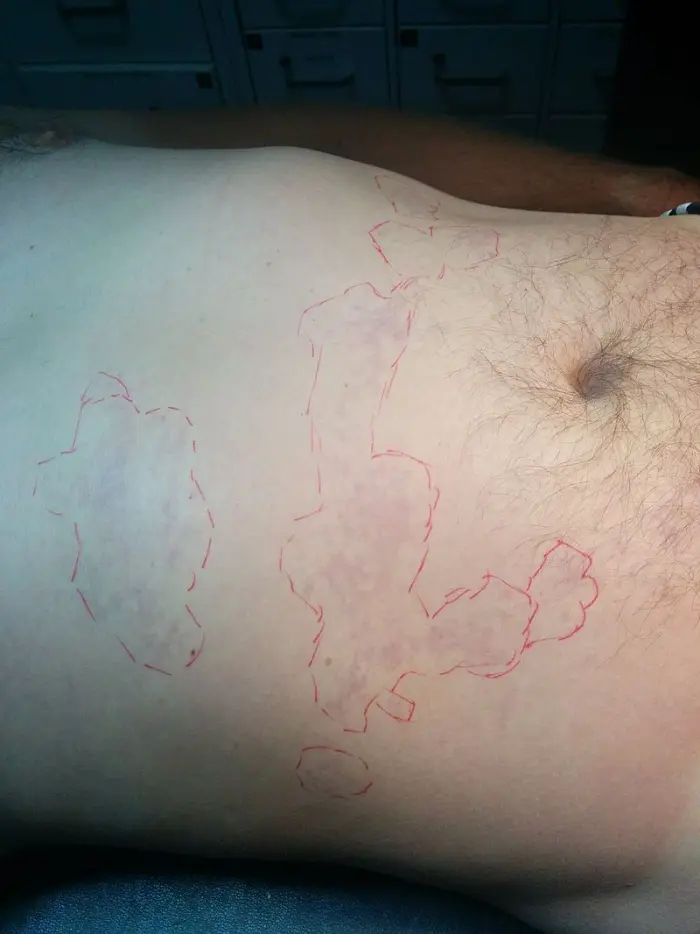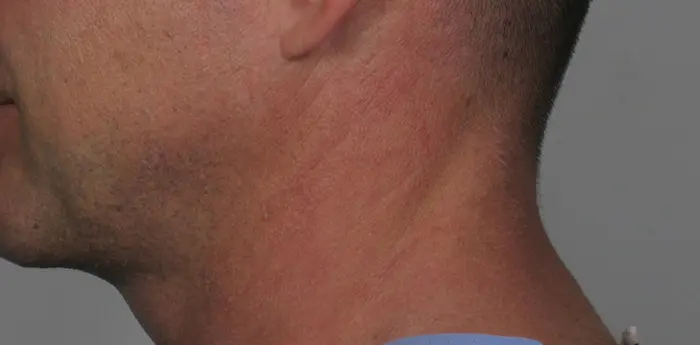Cutis Marmorata
Skin Conditions
Cutis marmorata is the name given to a skin condition which appears as a faint, lacy, and red/blue pattern. The image shows the affected areas outlined in red. There are a few different clinical scenarios which can give rise to cutis marmorata.
The first and most common cause is almost always benign; it can appear on the skin of an infant that has been exposed to cold temperatures. It can appear in conditions as mild as a chilly day. It represents an immature normal response of the skin to the cold.
In order to conserve heat the blood vessels in the skin receive less blood flow. This shunts warm blood away from the cold environment and to the core of the body. The nervous system of infants is not completely developed, and the appearance of this lacy pattern reflects that. However, if the pattern does not resolve with rewarming the infant should be evaluated for rare underlying genetic diseases such as patau syndrome and edward syndrome.
The appearance of cutis marmorata in an adult can signify far more serious ailments. However, its appearance is seen in cardiogenic shock – a condition in which the heart is acutely failing to pump blood resulting in a whole host of symptoms including, among other, increased heart rate, increased breathing rate, and altered mental status.
Cutis marmorata should not be used as the sole symptom used to diagnose cardiogenic shock. It can also appear in adults suffering from decompression sickness (a disease caused by rapid ascent from deep water, also known as the bends) and should be interpreted as a sign that the individual will eventually progress to a more serious form of the disease.
Cutis Marmorata should not be confused with “Cutis marmorata telangiectatica congenita” – a genetic disease with a similar presentation and name.
If you or your infant is suffering from symptoms of cutis marmorata contact your dermatologist for evaluation and treatment.































